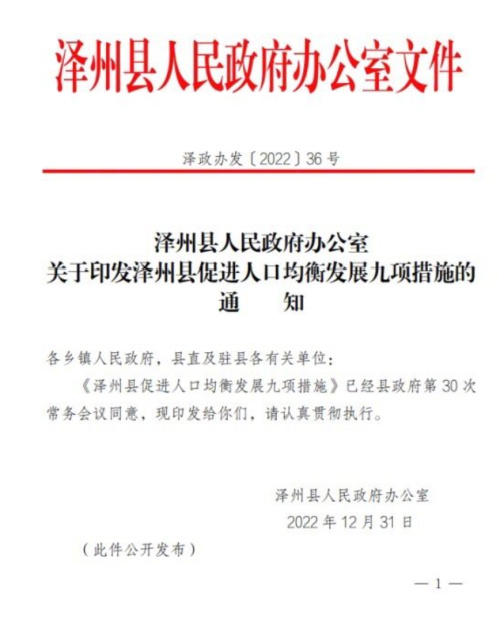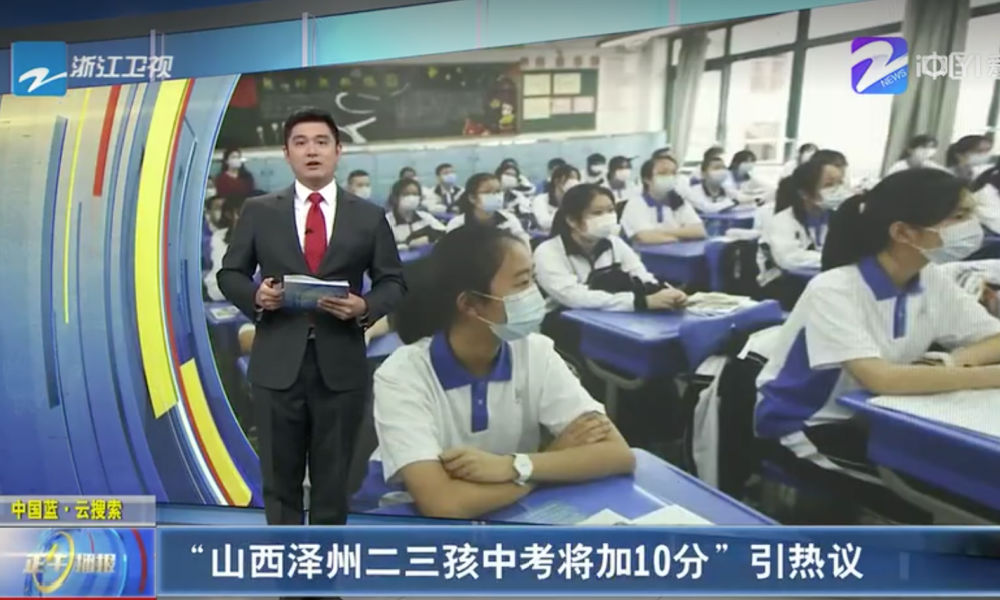As Chinese experts and local authorities across the country are thinking of new ways to encourage couples to have more children in light of China’s dropping birth rates, this latest measure announced by Shanxi’s Zhezhou County has sparked controversy.
Dropping birth rates have been a major concern for Chinese authorities for years now, and in light of the recent Two Sessions and its aftermath, it has become a bigger topic of discussion on Chinese social media.
To encourage young people to marry and have more children, various initiatives have been suggested or implemented, with a particular focus on the role education plays in this matter.
One recent proposal from an expert has been to shorten the education period as a means to promote China’s birth rates. This includes the idea of eliminating the middle school entrance exam to reduce two years of elementary and middle school education to allow young people to start their post-graduate life at an earlier age.
Earlier this month, another measure that also focuses on education in the context of boosting birth rates sparked heated debates on Weibo.
The measure was introduced by the local government of Zezhou County, a county in the southeast of Shanxi province. The idea entails that families of two children or more will receive benefits in education; their second or third child would get ten additional points in their senior high school exams (zhongkao 中考).
The related hashtag, titled “Second or Third Children from Shanxi’s Zezhou County Will Receive an Additional 10 points in the Senior High School Entrance Exam” (#山西泽州二三孩中考将加10分#) received over 120 million views in less than two days.
On Chinese social media, most netizens responded to this proposed measure with indignation, arguing that it violates the basic principle of exam equality.
In response, one popular legal blogger on Weibo called ‘Lawyer Zhuang Zhiming’ (@庄志明律师) published an article titled: “Shanxi’s Zezhou County Giving Families with Two/Three Kids Extra Zhongkao Points – How Did Such a Brainless Policy Come About?” (“山西泽州二、三孩家庭中考加分,如此弱智政策是怎么出台的?”)
In the article, the author vehemently criticized the policy, stating that it goes against the basic spirit of education equality and describing it as a “devilish measure against the times” (“逆时代的魔鬼之操作”).
In addition to being unfair to one-child families, the author argues that the policy also treats the first child of two or three children families unequally since they cannot receive the extra bonus points while their younger siblings can.
Many users on Weibo also agree with this argument, stating that the policy creates a situation where the first-born child is “inherently placed at a disadvantage,” “starting one step behind the others.”

The cover of the official notice from the Zezhou county government regarding their measurements for promoting the balanced development of population. Image from Sina Weibo’s post.
Other netizens also criticized this policy, viewing it as an extreme family planning policy. One Weibo post under the hashtag suggests that this policy is similar to measures taken during the one-child policy era and creates inequality to compel people to realize the state’s birth rate goals.
Another Weibo user stated: “When we were young, our parents were fined for having multiple children, while we watched families with one child or two daughters receive bonus points. Now that we’ve grown up and can’t afford to have more children, we’re watching those with two or three children receive bonus points.”
Some also expressed anger and frustration in the comments sections, saying these kinds of policies make them feel pressured to have children and actually makes them feel like not having kids altogether.
“Just don’t have babies at all,” one person wrote, while another comment said: “If we would treat humans as actual humans, we could avoid strange occurrences like this.”
In mid-March, Sina News reported that the local government responded that the policy is not active yet and is being implemented in “one or two years.”
In addition to the extra points for the senior high school entrance exam, the local authorities have come up with other measures that benefit families with two or three children, including exemption from outpatient registration fees in the county’s public hospitals, an additional sixty days of maternity leave for the third child, 50% off (second child) or no fees (third child) for county public kindergartens, and free after-school childcare services.
Although these local initiatives have drawn a lot of criticism, some people also applaud them.
Phoenix Weekly‘s Weibo account posted about all the measures taken by the local government, and one person replied: “This is the most effective policy I have seen so far. If Shanghai were to implement such measures, the birth rate would increase very quickly.”
Other netizens also suggested that the policy may not be as harmful as some claim it is. In response to concerns about the policy’s impact on education equality, some point out that the extra points are only added if students take the zhongkao for high schools located within the county. They, therefore, suggest the measure could actually decrease competition for urban schools, since there will be no bonus points for those entrance exams.
Another Weibo user trivialized the policy’s impact by suggesting that “there are no good high schools in the county, so [the policy] won’t have much of an influence [on education equality] at all.”
While the policy’s scope is limited to the county level and may not significantly affect the lives of most individuals, most commenters in these online discussions still see it as a challenge to the fundamental values of equality, merit-based education, and individual autonomy over family planning.
Many people doubt the effectiveness of manipulating the education system to boost birth rates and argue that addressing the broader socio-economic context is the only viable solution: “The government’s priority should be to ensure high-quality basic services for children and to maintain these standards. When people feel happy, they may be more willing to have children. Improving the quality of child-rearing and education is more crucial than increasing the quantity of children.”
By Zilan Qian
Get the story behind the hashtag. Subscribe to What’s on Weibo here to receive our newsletter and get access to our latest articles. Follow us on Twitter here.
Spotted a mistake or want to add something? Please let us know in comments below or email us. First-time commenters, please be patient – we will have to manually approve your comment before it appears.
©2023 Whatsonweibo. All rights reserved. Do not reproduce our content without permission – you can contact us at info@whatsonweibo.com


 China Insight11 months ago
China Insight11 months ago
 China Digital10 months ago
China Digital10 months ago
 China Arts & Entertainment11 months ago
China Arts & Entertainment11 months ago
 China Arts & Entertainment12 months ago
China Arts & Entertainment12 months ago





























